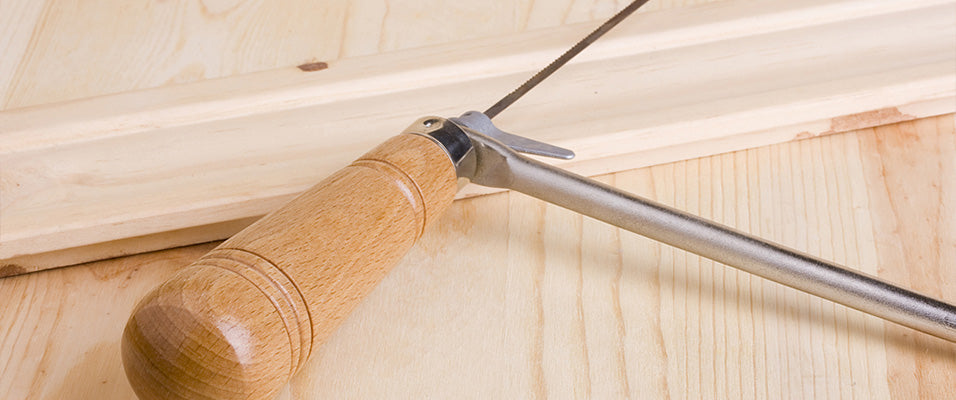
Types of Hand Saws and Their Uses
Source: Constantine Pankin/Shutterstock
A hand saw is one of the most essential tools for any home. In every toolbox of DIYers, woodworkers and professional woodworkers, you will find one or more types of hand saws. Understanding the fundamental differences between saws will help you determine which is right for the job. It is important to consider the application and the materials before purchasing a saw. Not every saw is applicable for each and every project. Saws consist of different teeth variations, with the largest being ideal for heavy duty projects. The smaller the teeth are, the better they are for softer woods and precision cutting. Again, it is important to do your research and finalize your project before purchasing a saw.

We all are familiar with saws, but the diversity of this tool is what makes it so important. Teeth size, the saw shape and the teeth contour are all important factors, but even more important is the material you are trying to cut. Are you looking to cut drywall? There are drywall specific saws. Looking to cut metal? You could try a hack saw. For finer metals while jewelry making, you can try a coping saw. Really, the opportunities are endless, so let’s jump right into some of the differences.
1. Hand saw: A manual hand saw is an important tool in many workshops for cutting fiberglass, drywall or wood. These hand tools are a staple in many shops and homes. These are not for precision work. They are for cutting general material.
2. Keyhole saw: The keyhole, or compass saw, has a sharp point at the tip of the blade, allowing it to poke through soft materials like paneling, drywall and laminate. This is often used in conjunction with a drywall saw, as the two go hand in hand for finishing a drywall job.
3. Coping saw: Coping saws are U-shaped saws equipped with thin metal blades and with various teeth sizes. Excel Blades offers a coping saw that includes detachable replacement blades. They are great tools for making molding on cabinets and furniture. Coping saw blades are additionally versatile for precision metal works. Commonly used by jewelers, they have shorter depth than a fret saw, allowing them to be more versatile and maneuverable.
4. Drywall saw: Drywall saws, or alternatively known as wallboard saws, are used to cut drywall and sheetrock. These are often used by contractors for utility plugs, fixtures, piping and electrical outlets. This is also commonly used by those who are fixing homes and buildings.
5. Pull saw: A pull saw, or dovetail saw, can cut a variety of materials. Excel Blades offers a number of pull saws that work wonderfully with our mitre box. This is great for precision work, like cabinet molding or picture frames. Remember, they are called a pull saw for a reason. These saws cut by the pull stroke, not the other way around.
6. Rip saw: A rip saw is used in woodworking for rough cuts. They feature large teeth which are used to cut parallel to the grain of the wood. They do not have angled edges, so as you maneuver the saw back and forth, it is almost chiseling away the wood rather than cutting it like a knife.
7. Bow saw: A bow saw is another U-shaped saw, commonly used by those landscaping or gardening. They are great for clearing brush and sawing down branches.
8. Hack saw: Hack saws are versatile tools that come equipped with higher tension blades, allowing for straighter and sharper cuts.
9. Crosscut saw: This is a similar concept to the rip saw in that it also “rips” the wood, rather than cutting it with a grinded edge. The difference is all in the name, though. The crosscut saw is used for cutting across the grain of the wood, rather than with the grain. This is an important detail to consider when purchasing a saw.
10. Fret saw: As mentioned previously, the fret saw is quite similar to the coping saw, or jeweler’s saw; however, it has a long depth. This is also great to work with for softer and thinner wood.
11. Veneer saw: A veneer saw is very different from other saws in that it is a double edge tool for cutting thin hardwood veneer. It looks like something between a spatula and a dough cutter, but make no mistake about it — this tool does not belong in the kitchen!

As you can see, there are so many different applications for a saw. Depending on your project, you could have one or more saws. Most workshops carry a variety of these, so they are always left with what they need on hand at all times. If you are looking for rough cuts, try out a hack saw. If you are in the market for a precision tool, shop our jeweler’s saw. We promise that not just jewelers love this saw!